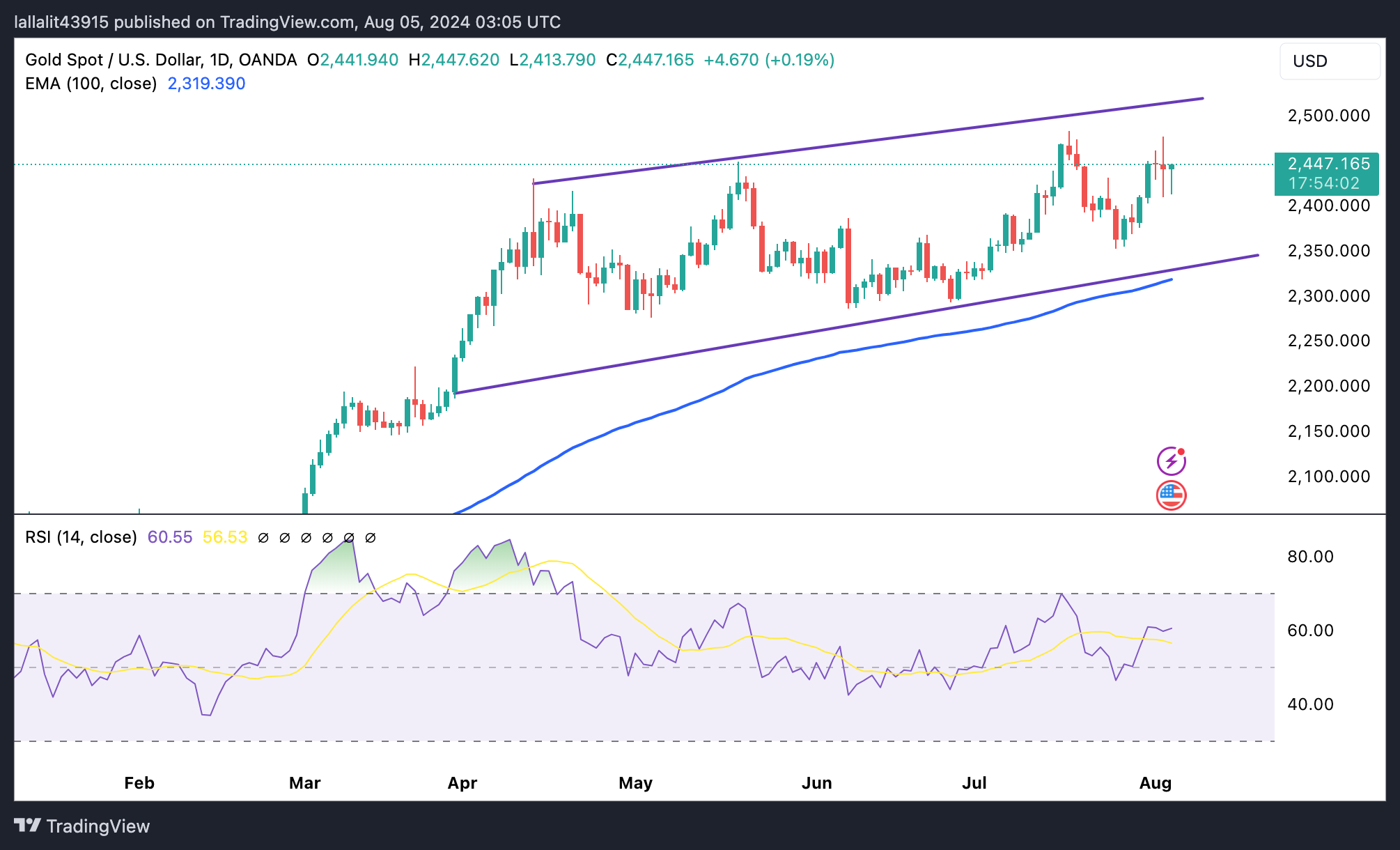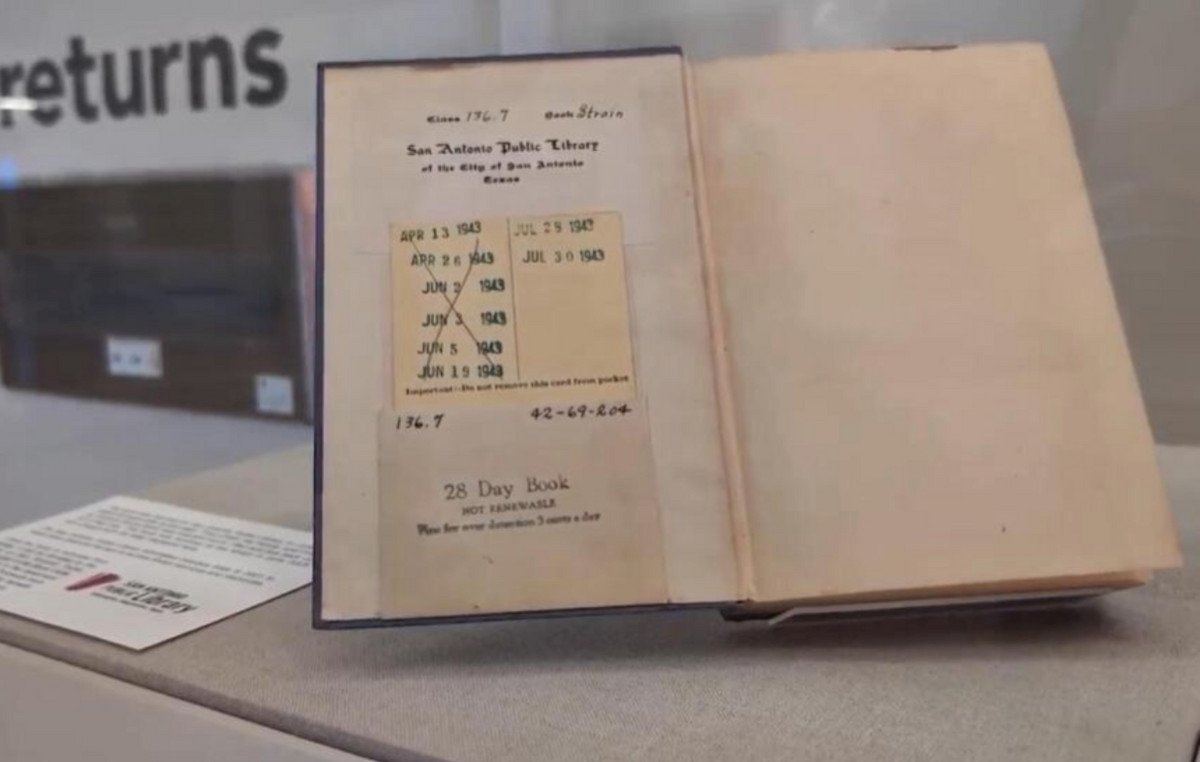- Gold prices recovered recent losses in Monday’s Asian session.
- Disappointing US jobs reports and risk-averse sentiment continue to support the yellow metal.
- Investors are awaiting the release of the US ISM Services PMI for July, due on Monday.
Gold (XAU/USD) price is gaining traction on Monday on the back of weaker Dollar. Markets are still digesting the dovish FOMC stance and softer US jobs report. Meanwhile, US Treasury yields and the US Dollar (USD) are likely to remain under pressure, acting as a tailwind for the yellow metal. Moreover, rising geopolitical tensions in the Middle East could continue to support traditional safe-haven assets like Gold.
Looking ahead, Gold traders will be keeping an eye on the US ISM Services Purchasing Managers’ Index (PMI) on Monday for fresh catalysts. The Services PMI is estimated to improve to 51.0 in July from 48.8 in June. In case of stronger than expected data, the USD price could rise and limit the upside of the precious metal.
Daily Market Wrap: Gold prices rise amid softer US jobs data and rising geopolitical risks
- US Secretary of State Tony Blinken told his counterparts from G7 countries on Sunday that an attack by Iran and Hezbollah on Israel could begin as early as Monday, three sources told Axios.
- US nonfarm payrolls (NFP) rose by 114,000 in July from 179,000 in the previous month (revised down from 206,000), weaker than expected of 175,000.
- The US unemployment rate rose to the highest level since November 2021, standing at 4.3% in July from 4.1% in June. Average Hourly Earnings rose 0.2% month-on-month in the same reporting period, below the market consensus of 0.3%.
- The market is currently pricing in a nearly 74% chance of a 50 basis point (bp) cut by the Fed at the September FOMC meeting.
- Chicago Federal Reserve Bank President Austan Goolsbee said Friday the Fed should not overreact to single-month numbers after U.S. NFP came in well below forecasts, but noted that inflation and employment data have progressed significantly in recent months.
Technical Analysis: Gold price maintains long-term bullish trend
Gold price is trading higher on the day. Nevertheless, the yellow metal maintains a constructive outlook on the daily time frame as it remains above the key 100-day exponential moving average (EMA), with the bullish 14-day relative strength index (RSI) around 58.0.
The precious metal has been trading inside the ascending trend channel since mid-April. The first upside target emerges near $2,450 (May 20 high) en route to $2,483 (Jul 17 all-time high). Bullish candles above this level could expose XAU/USD to a possible bullish push towards the upper boundary of the trend channel at $2,515.
On the downside, the initial support level for the gold price lies at $2,355 (July 26 low). Further south could take the price up to $2,335, the lower boundary of the trend channel. A sustained trade below this level would pave the way towards $2,319 (100-day EMA).
Gold FAQs
Gold has played a pivotal role in human history as it has been widely used as a store of value and a medium of exchange. Today, apart from its luster and use for jewelry, the precious metal is considered a safe haven asset, meaning it is considered a good investment in turbulent times. Gold is also considered a hedge against inflation and currency depreciation as it is not dependent on any particular issuer or government.
Central banks are the largest holders of gold. In order to support their currencies in turbulent times, central banks tend to diversify their reserves and buy gold to improve the perception of the strength of the economy and the currency. High gold reserves can be a source of confidence in a country’s solvency. Central banks added 1,136 tonnes of gold worth about $70 billion to their reserves in 2022, according to data from the World Gold Council. This is the largest annual purchase on record. Central banks in emerging economies such as China, India and Turkey are rapidly increasing their gold reserves.
Gold has an inverse correlation with the US Dollar and US Treasury bonds, which are the main reserve and safe haven assets. When the Dollar depreciates, the price of Gold tends to rise, allowing investors and central banks to diversify their assets in turbulent times. Gold is also inversely correlated with risk assets. A rally in the stock market tends to weaken the price of Gold, while sell-offs in riskier markets tend to favor the precious metal.
Gold prices can move due to a wide range of factors. Geopolitical instability or fears of a deep recession can cause the price of Gold to rise rapidly due to its status as a safe haven asset. As a non-yielding asset, Gold prices tend to rise when interest rates fall, while rising money prices often weigh down the yellow metal. Still, most of the moves depend on how the US Dollar (USD) performs, as the asset is priced in dollars (XAU/USD). A strong Dollar tends to keep Gold prices in check, while a weaker Dollar is likely to push Gold prices higher.
Source: Fx Street
I am Joshua Winder, a senior-level journalist and editor at World Stock Market. I specialize in covering news related to the stock market and economic trends. With more than 8 years of experience in this field, I have become an expert in financial reporting.








